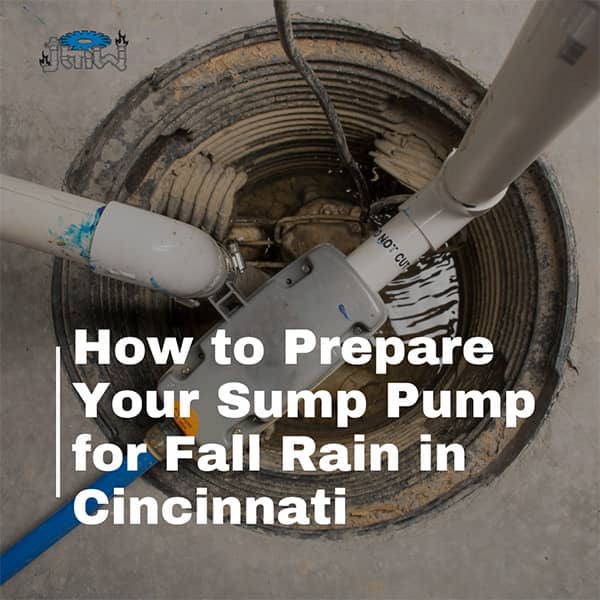As fall arrives in Cincinnati, so do the increased chances of rain and potential flooding. A well-functioning sump pump is crucial to protect your property from water damage during this season. Proper preparation can ensure your sump pump operates efficiently when you need it most. Here’s a step-by-step guide to get your sump pump ready for the fall rains.

1. Test Your Sump Pump
Before the fall rains begin, it’s essential to test your sump pump to ensure it’s working correctly. Pour a bucket of water into the sump pit to activate the pump. The pump should start automatically, remove the water, and turn off once the pit is empty. If it doesn’t operate as expected, it’s time for maintenance or repair.
2. Clean the Sump Pit
A clean sump pit is vital for efficient pump operation. Remove any debris, sludge, or sediment that may have accumulated in the pit. Use a bucket and sponge to scrub the sides and bottom, ensuring that the pump is free from obstructions and can operate effectively.
3. Check the Discharge Pipe
Inspect the discharge pipe that carries water away from your sump pump. Ensure it is properly connected and free of clogs. Check for any signs of damage or wear. The pipe should direct water away from the foundation of your home to prevent any water from seeping back into the pit.
4. Inspect the Pump’s Power Source
Make sure your sump pump is plugged into a properly grounded outlet and that the power cord is in good condition. If your sump pump relies on a battery backup system, check that the battery is fully charged and replace it if necessary. This ensures the pump will operate during power outages, which can be common during storms.
5. Test the Battery Backup
If your sump pump has a battery backup, test it to ensure it’s functioning correctly. Disconnect the main power supply and pour water into the sump pit to see if the battery backup kicks in and pumps the water out. This is crucial for ensuring continuous operation during power failures.
6. Ensure Proper Pump Installation
Verify that the sump pump is installed correctly and positioned at the lowest point in the sump pit. Check that the float switch, which activates the pump, is not obstructed and moves freely. Proper installation ensures the pump activates at the right water level.
7. Seal Any Gaps
Inspect the area around the sump pump for any gaps or cracks that could allow water to enter the pit. Seal any openings with appropriate materials to prevent water infiltration from external sources.
8. Plan for Regular Maintenance
Regular maintenance is key to keeping your sump pump in top condition. Schedule periodic checks and cleanings throughout the year, especially before heavy rain seasons. Keeping up with maintenance helps extend the life of your pump and ensures reliable performance.
9. Educate Household Members
Inform everyone in your household about the location of the sump pump and how it works. Ensure they know what to do in case of an emergency and how to check if the pump is functioning correctly.
10. Prepare for Emergencies
Keep a basic toolkit and some spare parts, such as a replacement float switch or a new pump, in case of emergencies. Being prepared can save you time and stress if your pump fails during a heavy rainstorm.
Conclusion
Preparing your sump pump for fall rain is a crucial step in safeguarding your Cincinnati home from potential water damage. By testing and maintaining your pump, cleaning the sump pit, and checking the discharge pipe and power source, you can ensure your sump pump performs reliably during fall storms. Regular upkeep and preparation will help you avoid costly repairs and keep your property dry and protected throughout the rainy season.
